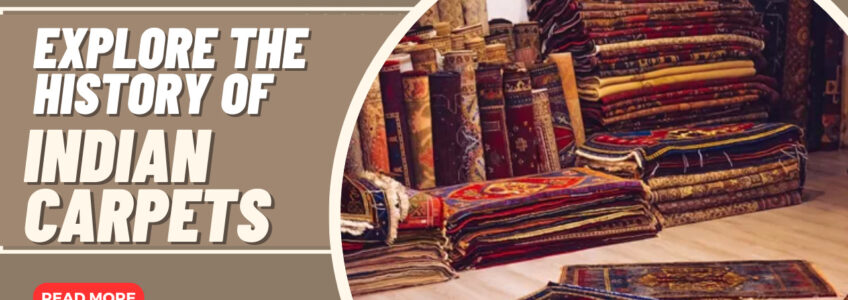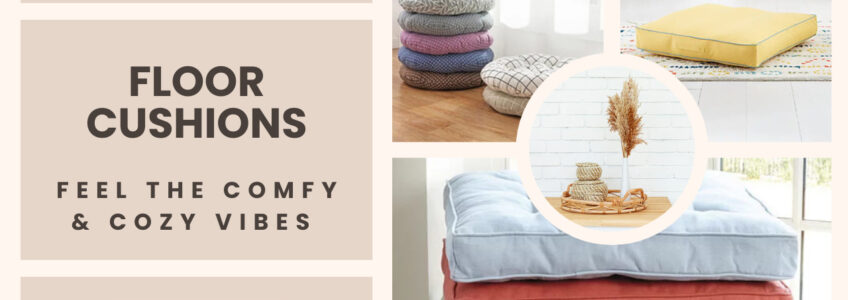‘First impression is the last impression’
The first thing your guests notice is your home’s interiors, therefore it should exhibit welcoming and comfy vibes. Your living space interiors and aesthetics tell a lot about you as a person, carpet is the most exquisite factor of any living space. Especially, if we talk about the Indian rugs which are considered conversation starters and impress guests at home. Indian rugs and carpets are fantastic investments for any interior design style. Indian rugs and carpets enhance any home’s decor, whether traditional, transitional, mid-century contemporary, bohemian or a mix. Uniqueness makes Indian rugs and carpets beautiful. They are in huge demand, for not only homes but for commercial spaces too.
Exquisite designs, vibrant colors, and fine craftsmanship make the Indian rugs stand out from the crowd. They are well known for their long and rich history with an essence of Persian, Turkish, Islamic, European, and Indian art and traditions. With a wide variety of styles, designs, colors, and materials, Indian carpets range from exquisite and intricate Mughal carpets to simple and elegant dhurries. Indian carpets are a high-quality masterpiece of fine craftsmanship. One of the most interesting and distinct features of Indian carpets is the pattern in which their knots are braided. These carpets are often made with 24-194 knots, even more in some cases.
Remember Aladdin and the Magic Carpet?
Ever wondered where Aladdin found a magic carpet?
Stay connected as we unveil all the facts!
Let’s dive into the history of carpets to find out this secret.
History of Indian Rugs and Carpets
The earliest evidence of carpet weaving in India dates back to the 5th century BCE when wool or cotton-made carpets were produced in the Indus Valley Civilization. Furthermore, this art form was given more recognition during the reign of the Mughals in India. The Mughal Empire is considered the golden age of carpet weaving. They embraced elements from Persian, Turkish, and Indian Traditions as well as European influences.
During British rule in India, the production and quality of Indian carpets witnessed a downfall, as the East India Company exploited and monopolized the trade. However, commercial manufacturing reawakened after India’s independence in 1947. The weavers introduced new techniques and materials to cope with the changing demands of the market.
After diving into the history of Indian carpets, the question in your mind may arise:-
What are Indian Rugs Called?
The names assigned to the Indian rugs depend upon the origin, style, and technique.
- Antique Indian rugs are often termed Oriental rugs.
- Flat-woven rugs, made with wool, cotton, or jute, having floral or geometric patterns are termed Dhurrie rugs.
- Pile-woven rugs, made with silk, wool, or cotton, having intricate motifs which are inspired by Persian and Mughals are known as Kashmiri rugs.
- Agra rugs are pile-woven, wool or silk-made rugs, having floral or medallion designs inspired by Mughal and European styles.
- Jaipur rugs are well known for their colorful and diverse patterns, influenced by Rajasthani and Persian styles.
- Mirzapur rugs are pile-woven, wool, or synthetic fibre-made rugs, having modern and abstract designs. They are often used for commercial purposes.
One more interesting part of the Indian Rugs which I mentioned in the introduction part was about the knotting style of Indian rugs.
Curious to Know About the Unique Patterns of Knots in Indian Rugs?
The number of knots and the knotted pattern of Indian rugs make them unique. Do you know that no two Indian carpets are alike? Since the carpets are handmade and knotted, every carpet differs in some way from the other. The intricate details make them more beautiful and every knot tells a story of craftsmanship thus, Indian rugs and carpets are one of a kind.
‘Imperfect yet unique’
Let’s talk about the quality of handmade Indian carpets!
Quality of Handmade Indian Rugs and Carpets
Indian weavers are skilled in their profession and meet the customer’s requirements very skillfully. They can customize the carpet according to your preferences, and weave a beautiful carpet to compliment the aesthetics of your living space. Bring a touch of elegance and luxury with hand-woven carpets made especially for you with love. Not sure about the quality of the rugs? Trust me, Indian rugs and carpets are made with high-quality materials and are an example of durability. Premium quality wool or silk is used, and experts weave the threads with utmost care which makes the carpets long-lasting and durable, serving the users for years and years without getting tarnished.
Some of the Famous Indian Carpets
Indian carpets and rugs are categorized and they vary in style. Some of them include wool, bamboo, cotton, jute, coir, and grass.
‘A lovely addition to any Indian home.’
- The Mughal-style carpet is a classic and popular type that replaced traditional designs with Persian carpets and rugs. This one-of-a-kind carpet style became popular in India under the influence of Jahangir (1605–1627).
- Antique Indian rugs, unlike Persian carpets, are interesting. These vintage rugs are quite expensive. Ancient Indian rugs are kept in museums that date back to the 16th and 17th centuries, having central or eastern Persian design influences. The artistic consistency makes it difficult to identify their origin.
- Floral rugs are another distinctive type of Indian carpet. Flowering plant patterns, usually depicting varied species, are put in an irregular grid on such rugs. They consist of vibrant hues and intricate patterns.
FAQS
Where Can I Find the Famous Indian Carpets?
Carpet production is famous in Jaipur, Mirzapur, and Bhadohi. Jaipur’s block-printed textiles and rugs are as famous as Bhadohi and Mirzapur’s hand-woven carpets. Tourists seeking unique, high-quality carpets can visit these regions, known for their extensive carpet manufacturing history.
What Are Indian-origin Carpets and Rugs Called?
Indian rugs, often called “Indian carpets.” Their high quality, vibrant colors, and intricate patterns make them famous. Traditional wool, silk, or cotton hand-knotting, tufting, and weaving methods are used to make these rugs. The magnificence and durability of Indian rugs make them popular floor coverings and wall hangings.
Which City is Referred to as the Carpet City?
Iran’s best weavers reportedly stopped in Madhosingh near Mirzapur, on their journey centuries ago. Bhadohi District was founded in 1994, and Bhadohi-Mirzapur is India’s largest carpet-producing center. They erected the first loom and the Indian city of Bhadohi is known as the “Carpet City.” Bhadohi-Mirzapur is a major Indian carpet producer. The city has various carpet-weaving workshops where skilled artisans employ traditional ways to make intricately beautiful carpets. The “Carpet Capital of India,” Bhadohi-Mirzapur Hub, draws shoppers looking for high-quality carpets.
If you have any questions, don’t hesitate to post them below, we will reply to them and update our blog. By asking a question, you are contributing to making this blog more useful. We appreciate your engagement and encourage you to share any thoughts or experiences you have with Bhadohi-Mirzapur’s carpet industry. Your insights will not only enrich our blog but also provide valuable information to our readers who are interested in exploring this unique craft.
‘Carpets that define you and your style.’


